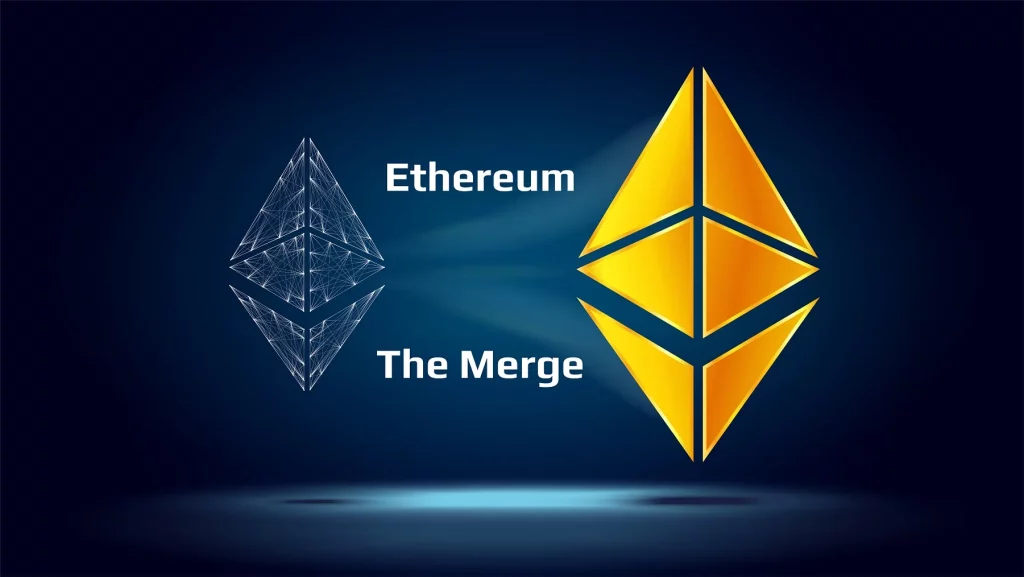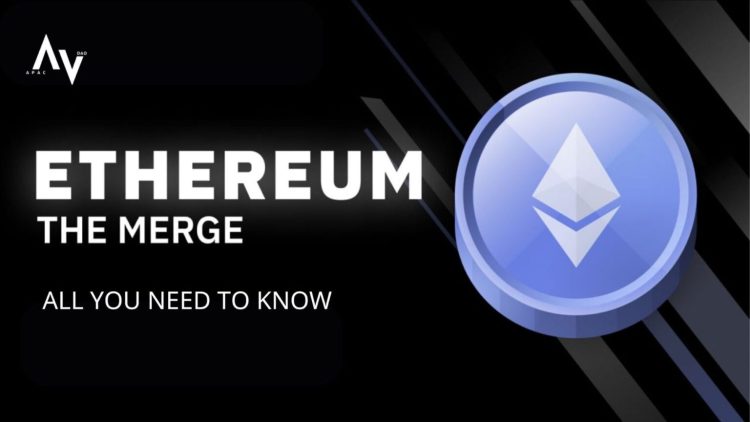Ethereum has long been the backbone of decentralized finance (DeFi), NFTs, and smart contract innovation, but it has also faced ongoing criticism for high transaction costs and network congestion. As demand on the Ethereum blockchain surged, developers and researchers worked tirelessly to deliver upgrades that could reshape how the network functions—both in terms of efficiency and user adoption. Among these, the most pivotal was The Merge, Ethereum’s transition from Proof-of-Work (PoW) to Proof-of-Stake (PoS).
But how exactly have these upgrades impacted transaction costs, gas fee patterns, and overall network usage? And what role do Layer-2 (L2) scaling solutions play in this evolving ecosystem? To answer these questions, we’ll explore Ethereum’s upgrade history, analyze the effects on fees and adoption, and examine how Ethereum’s evolution is shaping the broader blockchain landscape.
The Merge: Ethereum’s Transition to Proof-of-Stake
The Merge, completed in September 2022, was one of the most anticipated events in blockchain history. It marked Ethereum’s shift from an energy-intensive Proof-of-Work system, where miners solved complex problems to validate transactions, to Proof-of-Stake, where validators secure the network by staking ETH.
Why the Merge Mattered
- Energy Efficiency: Ethereum reduced its energy consumption by more than 99%, aligning with global sustainability goals and boosting institutional acceptance.
- Security and Decentralization: PoS introduced new economic incentives for validators, enhancing security while broadening participation.
- Foundation for Future Upgrades: While the Merge itself didn’t significantly reduce gas fees, it set the stage for future improvements like sharding and more advanced scaling solutions.
Impact on Network Dynamics
- Stability of Block Production: The Merge improved block finality, reducing the variance in transaction confirmation times.
- Validator Economics: Staking ETH became an attractive yield option, further decentralizing network security.
- Public Perception: The eco-friendly narrative expanded Ethereum’s reputation, particularly among enterprises and regulators.
However, contrary to widespread expectations, the Merge did not directly slash transaction costs. Instead, it created the infrastructure for scaling improvements that could address gas fee challenges.
Gas Fee Patterns Before and After Ethereum Upgrades
Gas fees—paid by users to process transactions—have always been Ethereum’s Achilles’ heel. During peak periods of NFT minting or DeFi hype cycles, fees could spike to hundreds of dollars per transaction, effectively pricing out smaller users.
Pre-Merge Gas Fee Landscape
- Extreme Volatility: Fees would skyrocket during popular events, such as NFT launches or DeFi yield farming.
- Congestion Problems: As more projects launched, Ethereum’s limited throughput (around 15–30 transactions per second) became a bottleneck.
- Barrier to Entry: Smaller retail users were often excluded due to prohibitive costs, undermining Ethereum’s claim as a global financial layer.
EIP-1559 and Fee Burn Mechanism
Before the Merge, Ethereum introduced EIP-1559 in August 2021, which restructured the gas fee model. Instead of all fees going to miners, a portion of fees was burned, reducing ETH supply. This mechanism:
- Improved fee predictability with a base fee model.
- Turned ETH into a deflationary asset during high activity periods.
- Added a powerful economic layer to ETH’s long-term value proposition.
Post-Merge Gas Fee Dynamics
- Slight Reduction in Volatility: More consistent block times contributed to marginally smoother fee experiences.
- Persistent High Costs During Demand Surges: Despite PoS, fees still spike under heavy usage because Ethereum’s base capacity hasn’t drastically expanded yet.
- Expectation Shift: Users began to see L2 networks as the true solution for lowering transaction costs.
In short, while the Merge was transformative for Ethereum’s sustainability and security, it did not fully resolve gas fee concerns. Instead, it pushed the narrative toward scaling solutions.
User Adoption of Layer-2 Scaling Solutions
Layer-2 (L2) networks have emerged as the cornerstone of Ethereum’s scalability strategy. Rather than increasing base-layer throughput, Ethereum’s developers encourage scaling via rollups and sidechains that bundle transactions and settle them on Ethereum.
Popular Layer-2 Solutions
- Arbitrum: Offers optimistic rollups, with strong DeFi and gaming adoption.
- Optimism: Also built on optimistic rollups, with a governance structure designed to fund public goods.
- zkSync and StarkNet: Use zero-knowledge rollups, offering faster and cheaper transactions with strong cryptographic guarantees.
- Polygon: Originally a sidechain, now evolving into a multi-chain ecosystem integrated with Ethereum’s security.
Why Users are Migrating to L2s
- Massive Cost Savings: Transaction costs on L2s are often just a fraction of mainnet fees.
- High Throughput: L2s can handle thousands of transactions per second, compared to Ethereum mainnet’s ~30.
- Ethereum Security Anchoring: By settling on Ethereum, L2s inherit the security guarantees of the main chain.
Adoption Trends
- DeFi Migration: Protocols like Uniswap, Aave, and Curve launched L2 versions to accommodate users priced out of mainnet.
- NFT Ecosystem: Many NFT projects migrated to Polygon and zk-rollups to cut minting costs.
- Retail Onboarding: New users entering crypto are often onboarded directly to L2s through integrations with wallets and exchanges.
As adoption of L2s accelerates, Ethereum is evolving into a modular blockchain, where the main chain serves as a secure settlement layer, while L2s handle execution and scaling.

Ethereum’s Roadmap: Beyond the Merge
The Merge was only one milestone in Ethereum’s long-term vision. Upcoming phases of Ethereum’s roadmap are designed to complement PoS and scaling solutions.
The Surge
- Sharding Implementation: Will dramatically expand data availability and throughput, enabling L2s to become even more efficient.
- Goal: Scale Ethereum to handle 100,000+ transactions per second.
The Verge, Purge, and Splurge
- The Verge: Introduction of Verkle trees to optimize storage and improve decentralization.
- The Purge: Removal of historical data burdens to streamline the network.
- The Splurge: Miscellaneous improvements that fine-tune usability and scalability.
Together, these phases illustrate that Ethereum’s evolution is far from over. The Merge may have been a headline milestone, but the network’s scalability journey is ongoing.
Balancing Costs, Adoption, and Network Security
The interplay between gas fees, scaling solutions, and network usage highlights Ethereum’s unique position in the blockchain ecosystem. Unlike some rivals that offer low fees by sacrificing decentralization, Ethereum is attempting to maintain the “blockchain trilemma” balance of scalability, security, and decentralization.
- Transaction Costs: Still a challenge on mainnet but increasingly addressed by L2 solutions.
- Network Usage: Remains strong, with Ethereum consistently hosting the largest DeFi and NFT ecosystems.
- Security and Trust: Ethereum’s commitment to decentralization keeps it the most trusted platform for long-term builders and institutions.
Conclusion: Have Ethereum’s Upgrades Solved the Transaction Cost Problem?
Ethereum’s upgrades, particularly the Merge, have transformed the network’s foundations, making it more sustainable, secure, and future-ready. However, they have not yet solved the persistent problem of high gas fees during peak demand. Instead, Ethereum’s strategy now clearly emphasizes Layer-2 adoption, which is rapidly reshaping how users interact with the ecosystem.
Gas fees may remain a barrier on mainnet, but the broader Ethereum ecosystem is increasingly accessible thanks to rollups and scaling solutions. This layered approach positions Ethereum not as a single chain competing on transaction costs, but as a modular hub for decentralized applications, balancing sustainability, scalability, and decentralization.
For developers, investors, and users, Ethereum’s upgrades represent progress toward a network that can serve billions of people. The journey is far from over—but Ethereum has proven its resilience and adaptability in the face of challenges.

























